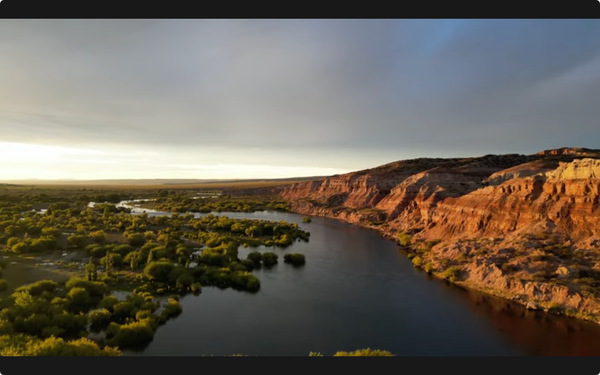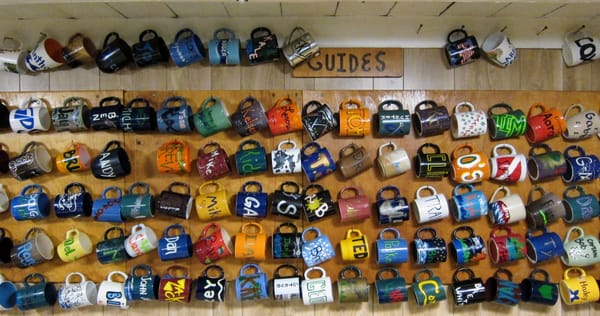Carry a net, prevent ego AND fish death
It’s time to stop thinking about nets as a tool for playing offense. Nets protect fish, and ultimately protect your ego.

𓆟 𓆝 𓆟
Most of us think nets help catch fish. That’s a fair assumption. It’s been their most obvious role since humans started fishing. Using a net, or some simple form of entrapment, has probably been around longer than using a hook. Set a bunch of posts across a river, or string up a net, or dip one in a pool full of fish, then boom, dinner’s served.
But for the catch and release angler, there’s more to a net than landing a big fish. Nets are for playing defense, not offense. Nets are protection.
Nets protect two things: The fish, and the angler’s ego.
The first net I knew
A long, long time ago, when I was small, before I discovered anything much, or ever fished by myself, my world itself was small. I fished with my grandfather on the AuSable River in northern Michigan. We used bait. Oh, reader, it pains me to this day. But alas.
With dusk approaching we'd float down from the launch above McKinley Bridge in an aluminum rowboat, with what today feels like an almost pathological, call-child-protective-services lack of gear. Rods and a tackle box. I suppose once you’ve fought your way out of Guadalcanal like he had you can take life as it comes, and the risk level of most anything else gets muted. But we’d always also have a net.
That model was an beat-up aluminum boat net, the handle scored with a crisscross grip pattern and a green polypropylene mesh bag. The net had landed so many fish the rough, thin cord was frayed and had all sorts of loose ends poking out. It must have been like barbed wire to the fish, all rough and toothy, peeling off their protective slime.
It hardly mattered: Another piece of gear that always came along for the float was a stringer, and about five seconds after a fish was in the net, it was bonked and onto the stringer. More than anything, the net in this case was a waiting-room to the afterlife.
Nets are for protecting fish
I rarely kill trout anymore. Maybe I’ll keep a hatchery fish or two at the lake when we’re camping, just so the kids on the trip can be reminded where the fish on their plate comes from. (“You see kids, that’s how government subsidies work in our complex, meticulously planned pseudo-agricultural outdoor recreation economy! Ryder, want to know about your tofu?”) It’s just too much fun to think of fish being in the river or lake, doing their thing. Sure, I like to catch them, but the idea of them being there is motivating enough to not be overly meddlesome. Thus, the net’s primary role: to protect the fish.
Nets help fish recover from the stress of being caught and played. A net is a place for a fish to safely catch its breath before heading back into the water to process what the hell just happened, in their own fishy way. It’s a chill-out room after the scary life danger rave of being fooled by a fly and dragged around by its lip. Using a net is a main component in the overall ethos of treating fish with care.
Thou Shalt Net
In many fisheries where catch and release is practiced, Europe especially, carrying and using a net is mandatory. Nets are incredibly effective in helping reduce fish mortality. I would be happy if net use was made mandatory on catch and release regulated waters.

In a sense, nets buy us time. Time to observe a fish while it’s in the water. To take a photo of the fish in the water. To relish a successful effort at fooling a fish. For the fish, that cooling off period is essential. I’ve caught rainbows and had large predatory browns follow the hampered fish and just wait at the edge of the pool for the dazed fish to return as easy prey. Time in the net revives the fish, and lets them metabolize some of the lactic acid that builds up during the fight, so they can swim back to safety swiftly.
Do I need a net when I’m fly fishing?
If it’s mandatory where you’re fishing, you absolutely need a net. If you’re planning on catching any fish, you probably need a net. If you’re not planning on keeping them, carrying a net is the right thing to do.
Here’s one reason why you might not need a net: You’ve become adept at releasing a fish without touching it. Fishing barbless flies helps a lot here, as do hook removal tools. Products like the Ketchum Release, or even home-made angled wire triangle on a handle removes make hook removal a snap. You simply place the business end over your leader and slide it down toward the fly. When it reaches the fly, the tool puts pressure on the shank of the hook and backs it out of the fish’s mouth. CFS member Chuck Grimmett makes his own, and so can you. They’re not difficult.
If you’ve got a tool to remove the hook without manhandling the fish, and you don’t care to keep ‘em around to take photos, or whisper sweet nothings of praise and gratitude, go ahead and go netless. There are exceptions here, for example, with really large anadromous fish, which are big enough to be tailed by their caudal peduncle, but that's a story for another day.
A three-year study on Wyoming’s North Platte found that fully a quarter of fish surveyed had some sort of hooking injury. 25%! That's a shocking number! On a positive note, this sort of surveying work is prompting more regulations around the kinds of hooks and rigs anglers are able to use, to avoid overlarge curved hooks, and pegged bead rigs, which tend to spear fish through the eyes, and cause facial and gill damage because of how fish eat them. For the umpteenth time we’re reminded to use barbless hooks. With the addition of proper net use and handling, we can reduce fish mortality even further.
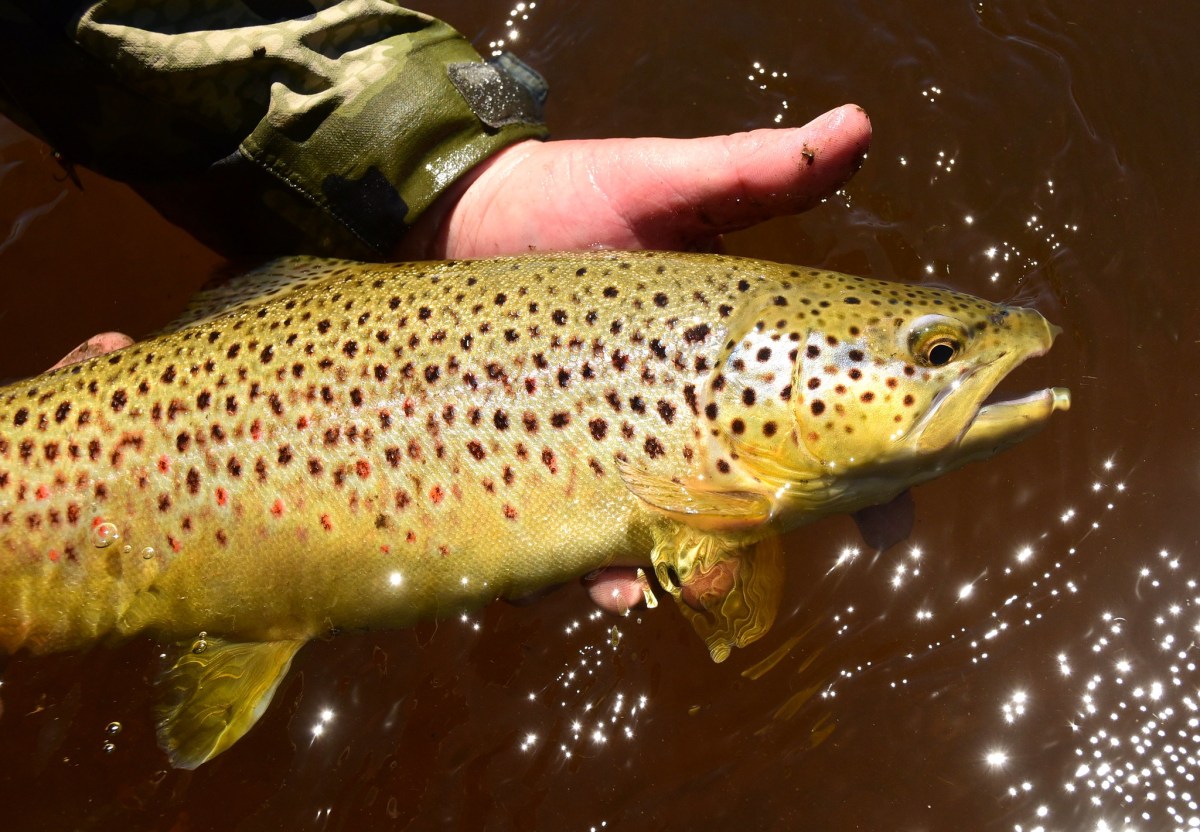
It’s all in the bag: safe handling depends on net material
For those of us who savor those tender post-catch moments, a net is the way. And not just any net. Get one with a soft plastic bag. These have three advantages:
- The soft plastic material is less rough on their protective slime outer coating, which is critical to keep intact to help the fish avoid waterborne bacteria and fungi
- The bag material is also harder for flies to pierce, and get stuck in, which creates a world of pain when it comes to tangles. Yet another element improved by barbless flies.
- If the material is clear plastic (also known as “ghost” material) it’s harder for fish to see the net, and they may not be as spooked (more on that later)
The net should fit the fish
There’s a proportionality to this: the fish has to fit the net. If it’s a large fish in a tiny net, there’s no chance it’ll be able to relax. If it’s a tiny fish in a large net, it will swim through the holes in the bag and get tangled further.

So that’s the first thing to consider: carry a net, and make it the right size for the fish you’re targeting. Be realistic.
We are all in this net, together
Whether you fish for the fishing, or fish to catch fish, or a combination of both, the reality is you’re eventually going to have outings where you catch a lot of fish. (Yes, my novice friends, it can happen.) How you deal with these times of abundance will mark your character as an angler.
If you’re having a fishy day, and the latest hookup is a fish that’s the same size or smaller than one you’ve caught before, and you don’t care to inspect it, a quick hook pop-out and adieu is fine. Hell, I welcome the long-distance release (LDR). I will sometimes even throw slack in my line when there’s another fish I’m targeting and/or I catch yet another dink. I know it’s hubris, but on some occasions the angling mind is poisoned by quantity, and we behave as if gorging ourselves today might make up for past and future hunger.
If it’s a bigger fish than you’ve caught that day, you probably want a chance to examine it properly. Because, who doesn’t want to linger with the mystery and wonder of this elusive sliver of perfection brought to hand, if only for a moment?
Make no mistake: This is all about you. You put the fish there, and now have a duty to protect it. The real net is our attachment to an outcome, to winning, to validating our ego, and we’re all wriggling and floppin’ around in there all the damn time. This is the second reason why we use a net: to protect ourselves.
How to net a fish effectively
Getting over the (perceived) shame of the LDR is the first step to netting a fish effectively. You’ve already done the hard work of fooling the fish, so there’s nothing wrong if it pops off the hook early. If you want to get the fish in the net, in flowing water or still, though, there are a couple things to consider:
Use your wingspan
The number one rule of fighting any fish is to maintain tension on the line at all times. Sure, bigger fish run, and you’ll need to use your drag, but you’re keeping tension. In most freshwater situations, by the time you’re in a position to get the fish in the net, you should have no more than a rod length and a half, or two rod lengths of line out to net the fish. You’re using the rod to create that tension more than anything else. Let it bend. It’s meant to.
Choose the right moment
Adrenaline will be coursing. Oaths and / or involuntary whoops may be uttered. The fish will be in shallower and shallower water. You’ll be able to tell when a fish is ready for the net. It will start to give up. Smaller fish can be maneuvered to the net quicker. In the fish’s interest, you’ll want to just get it done as quickly as possible. Horse that baby in, get the hook out, and let ’er go. With bigger fish, you need to get into position and wait for the right moment, when the fish seems tired.
Don’t show them the net
A fish doesn’t want to go in the net. It represents one of the many perils it has to evade to stay alive. So try and obscure it as much as you can. Waving the net around too soon, or before you’re ready to commit to the final move, can create a secondary obstacle to landing the fish. It’ll run from the net AND you. So, keep the net behind your body until you’re ready to deploy.
Lift and drop
In moving water, you can use the current to your advantage, and practice the lift and drop technique. When you’ve got the fish right where you want it, net at the ready obscured by your body, put a slight lift into the rod to bring the the fish to the surface of the water and upstream of you. Then position the net just below the fish, out of its line of vision. You want to use rod tension and the current to place the fish into the net. Lift and drop. You don’t want to be digging the fish out of the bottom of the river with the net. That’s a recipe for failure.
Don’t get ahead of yourself
Your thoughts will be racing. Take things step by step. Don’t try to get your phone out to take a picture, or FaceTime your mom. She’s probably having a fine time at Panera Bread anyway. Even looking around to plan out your photo, or mentally trying to consider framing is getting ahead of yourself. It’s a really good way to lose the fish. You’ll have plenty of time (relatively speaking) when the fish is safe in the net.
The heartbreak of being a bad net hand
A net can also be the object of greatest heartbreak for angler relationships and self-esteem. As we’ve covered, a fish big enough to need the net is also always on the precipice of being lost through clumsy net skills, or simply angler distraction.
There’s also the factor of cooperation in said big-fish gambles. Sometimes you just can’t handle it alone, or are sharing a net. “GET THE NET!” is less a call to arms, and more a cry for help. If you’re on the receiving end of this call, forewarned is forearmed. As the net guy or net gal you have the sovereign responsibility to help seal the deal without fumbling. Your job to take pressure off the angler.
Net losses
Clumsy net-work that results in lost fish is the best way (along with being late to takeoff in the morning) to torpedo your standing as a good fishing friend. I haven’t seen bad net work ruin friendships, but it’s a stigma you don’t want to earn. And, above all else, it’s a horrible feeling, for your net fumbling to be responsible for a friend losing a big fish. It’s much, much worse than losing the fish yourself.
It is downright stupid behavior. I mean that in the technical, psychophilosophical definition of the term. In 1976’s “The Basic Laws of Human Stupidity,” a treatise that should be required reading in every high school classroom, economic historian Carlo M. Cippola published an exhaustive analysis of stupidity, including four laws. This being Cippola’s Golden Law of stupidity: “A stupid person is one who causes problems for others without any clear benefit to himself.”
Do not be stupid behind the net when your friend is in the vulnerable position of wrangling a big fish. How do you accomplish this? Make one thing very clear with your friend: The netter calls the shots. This includes some of the above assessment criteria, chiefly when the fish is ready for the net, and instructions on when to execute the lift and drop. Good communication is essential here. When you’re called in to net the fish, you become the captain of this rocket ship. One advantage of a netting duo is you don’t need to get the fish as close to the rod. The net-wielder can position themselves downstream and potentially save a lot of grief, and / or time spent in the bitter endgame, where the fly popping out or the tippet breaking are increasingly possible.
Murphy’s Law of nets
One last thing about net technique. Nets are like cops: They’re never around when you need ‘em. If you forget your net at home, you will need a net. If you remember your net, you probably won’t. Don’t try and forget your net at home on purpose. You cannot outsmart Mr. Murphy. (Good idea, though, I like where your head’s at.)
It’s in the net, now what?
If a fish is in the net, even in shallow water, it's safe. (In case it isn’t abundantly clear, you always want to have the fish in deep enough water to cover its body.) It's not thrashing around on the bank or bashing itself on the rocks in the shallows. (Never beach a fish, either.) It's not going to run out of breathing room.
Step one is to remove the fly. Good net material will be harder for a hook to penetrate, and you don’t have to worry about your fly getting caught. Get your tool, or use your fingers, to remove the fly. You might need to use your pliers or hemostat.
Take your time: the adrenaline will still be surging. But the fish is safe in the net. Just keep that fish submerged, pointed upstream, with water running over its gills. With the hook out, and the fish ready to go, move that net slowly back and forth to let the water get over the gills. Give it a few seconds to catch its breath. Sometimes it takes a little while. Then wave goodbye.
A wet net is a happy net!
Bring your net. Practice on small fish. Get ready for the big show. Rehearse with your fishing partner next time they get a slimy stick fish. And then landing a great fish will be that much easier.
A wet net is a happy net!
Net style roll call
Nets come in all shapes and sizes, for all kinds of fish. I’ve always clipped my hand net to the side of my waist pack with a retractor and a magnet. The downside of this is it occasionally gets stuck on brush when I’m bushwhacking.
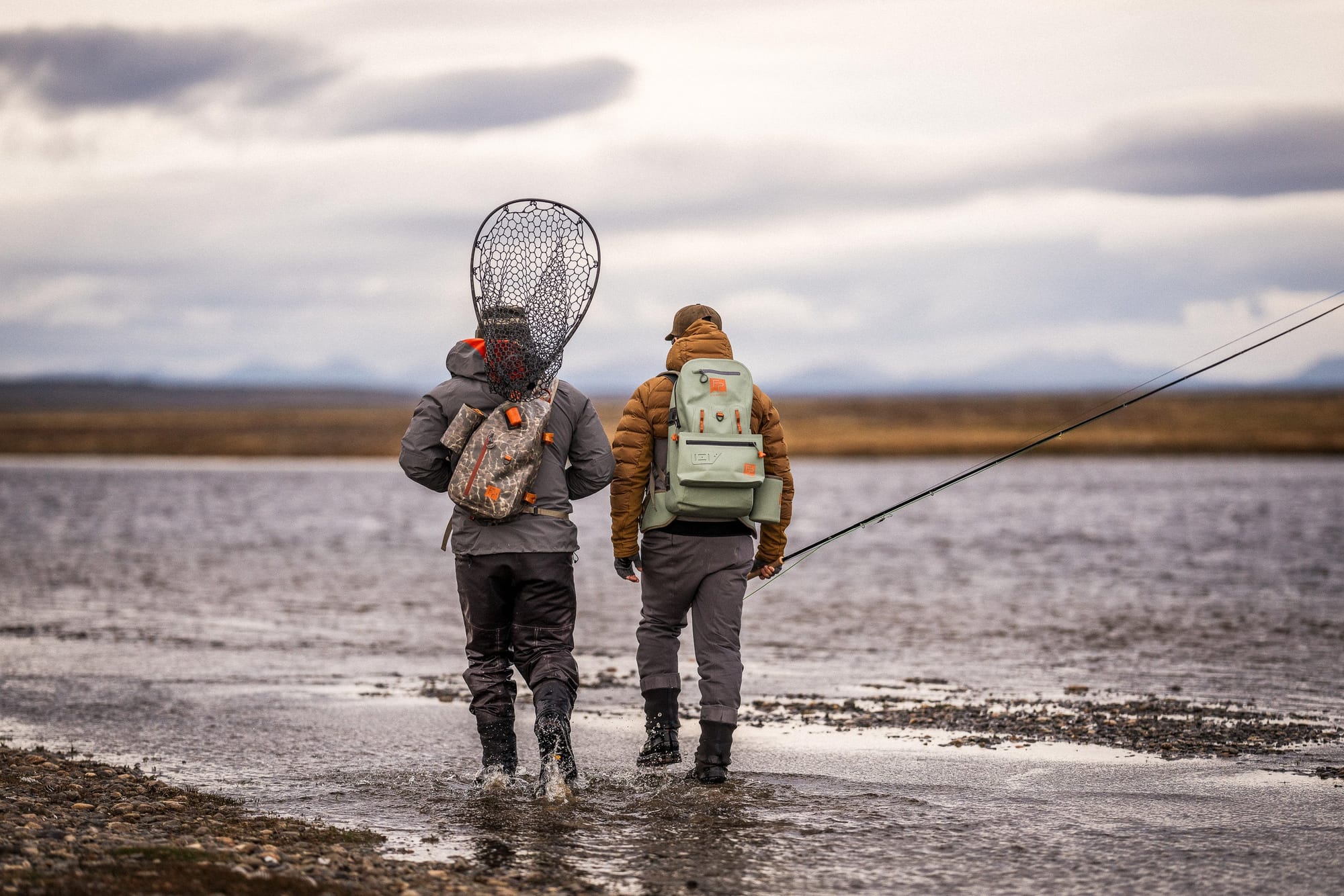
Lately, it has become popular to tuck longer nets in a sort of net scabbard in your gear. Fishpond makes great nets that integrate with their waist packs and backpacks, to make it less cumbersome to bring them along.
Here are a few types of nets that I tend to use.
Measure net
My primary hand net is a measure net. It has a set of inch marks on the bag to help you see how long the fish is. You simply let the fish lay flat in the bottom of the net for a moment, note the number at the nose, and the number at the tail, and add them together. If you can find one in 2” increments, the Gentleperson’s Round Up is maxed out.

Boat net
Boat nets have LONG (up to 4’) handles and big bags for landing fish from a boat, where you have to reach over the gunwale. Sometimes these nets have small scales in the handle for when you’re dealing with fish you want to measure in pounds.

Tamo net
Landing larger fish with a tenkara rod is challenging. There fixed length of line makes a yogic stretch essential. A Tamo-style net give you an advantage, because it features a bent handle to reduce the angle slightly. If you’re handy with wood, this is a fun kind of net to make yourself Here’s a beautiful net and netmaking tutorial from Adam Rieger on Tenkara Angler:
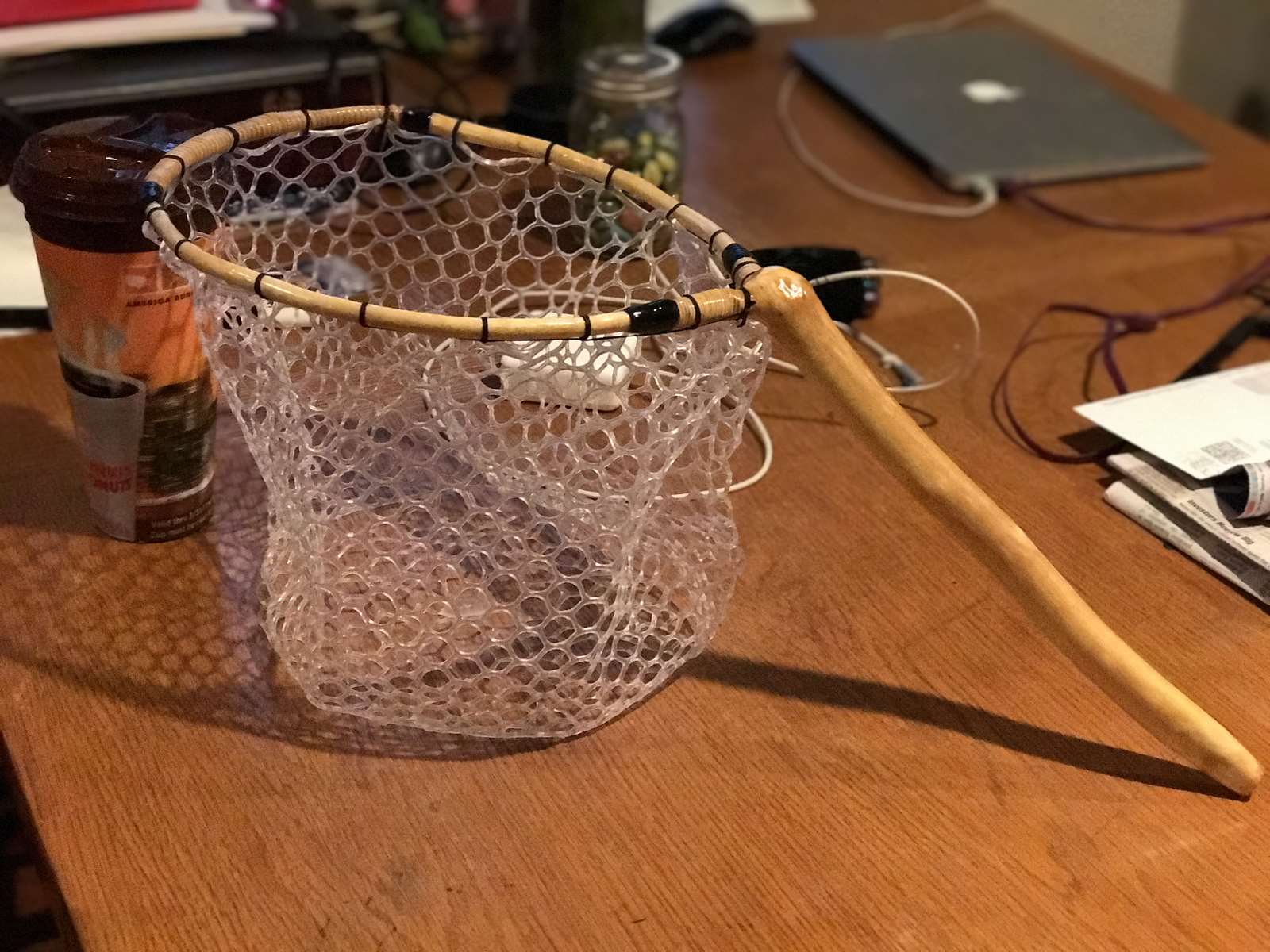
Aquarium net
This one isn’t used to land the kinds of fish we’re going for, but rather to sample the water and see if you can find any aquatic insects to inform fly selection. Keep one around your fishing rig when you’re stumped. You can also put a paint straining bag (get one for like $2.99 at your local hardware store) over the mouth of your main net and use it to sieve out bugs in the water.
Net-net
To summarize, as I step down from my soapbox: You should be carrying a net. You're out there to catch fish, and want to enjoy the moment. Pick one that suits the style of fishing you're doing, and you're all set.
You'll occasionally lose a fish trying to get it in the net. And maybe you'll lose a buddy's fish. But with some practice (and some humility) your net will become a fine fishing friend.
What's your net approach? Share it in the comments!
𓆟 𓆝 𓆟




